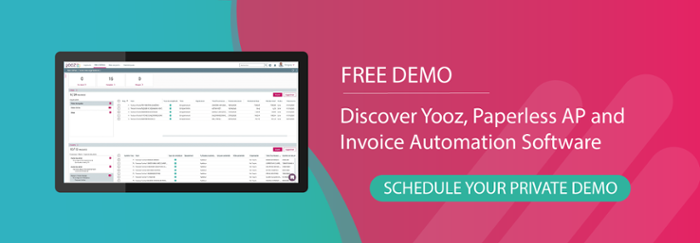If a company wants to keep its finances in order and maximize cash flow, mastering the payment approval process is essential. Approving payments to vendors, suppliers, and other stakeholders is a common business practice and requires careful attention to detail, safety, and compliance. However, the conventional method of approving payments is time-consuming, resource-intensive, and liable to human error. One of the best ways to improve Accounts Payable efficiency is through automation.
Payment approval automation can streamline the payment process, leading to better financial performance. In this piece, we'll explore the advantages of automated payment approval and offer tips for payment approval management to improve cash flow, accounts payable efficiency, and help your business thrive.
Benefits of Payment Approval Process Automation
Payment business automation brings a variety of benefits to companies of all sizes. Here are some of the key advantages that payable automation offers:
Increased Efficiency
By automating the payment acceptance processes, employees can save a lot of time and work. Automating payments reduces the amount of paperwork and extra steps involved in a manual invoice approval process, thus saving businesses time and money. This can also help reduce errors.
Improved Accuracy
Payment approval automation makes it less likely that a person will make a mistake, such as inaccurately entering data or missing a step in the invoice approval workflow. Automated processes ensure that all the needed information is complete and correct, lowering the risk of payment mistakes and the need for time-consuming corrections.
Better Compliance
Payment automation helps firms stay in line with both internal and external policies. Automation helps with spending caps, budget reviews, and expense report filing mandates (among others). It increases openness about finances while decreasing the possibility of noncompliance and any associated penalties.
Enhanced Visibility
Payment automation software provides real-time visibility regarding payment procedures and status. Managers and stakeholders can gain better insight into the organization's financial health, helping to aid in the early detection of problems or delays, allowing for more timely resolution.
Cost Savings
By switching to an automated system for approving payments, businesses can save time and money on routine tasks such as printing, filing, and storing paper documents. It can also help companies take advantage of early payment incentives and avoid late payment fines.

Triggering Payment Approvals
The trigger for a payment approval workflow varies depending on the business process and software used. In some cases, the approval workflow may be triggered when an invoice is added to the system, while in others, it may be triggered when the invoice is ready to be paid.
While the most common trigger for payment approval workflows is when an invoice is first received, the decision on which trigger to use may also depend on factors such as the business process, software used, and the required level of control over payment approvals.
Some businesses may prefer to have a review and approval process in place before the invoice is added to the system, while others may prefer to have a more streamlined process that focuses on payment-ready invoices. Ultimately, the trigger for payment approval workflows should align with the organization's goals and priorities and be flexible enough to accommodate changes in the business environment.
Understand the Invoice Approval Process
Payment approval workflows refer to the automated processes that organizations use to manage and approve payments, typically for Accounts Payable transactions. These workflows provide a structured and consistent approach to managing payments, ensuring that they're properly authorized, reviewed, and processed. Payment approval workflows are an essential part of financial automation, enabling organizations to streamline their payment processes, reduce errors and fraud, and improve overall efficiency.
Key Features of Payment Approval Workflows
Payment approval workflows typically include several key features, such as:
Invoice Receipt
Typically, the workflows are initiated upon receipt of an invoice or payment request by the organization.
Review and Approval
The workflow then moves through a review and approval process according to a present payment approval policy, typically involving multiple stakeholders within the organization.
Payment Processing
Once approved, the payment is processed, often via an automated payment platform.
Why Payment Approval Workflows Are Essential
Payment approval workflows are essential to maintain proper authorization and oversight of financial transactions within an organization. Given the prevalence of fraudulent activities in business, automated payment workflows are key to serving as a safeguard to reduce the risk of scams.
According to a study by the Association of Certified Fraud Examiners, organizations lose an estimated 5% of their annual revenue to fraud, with a median loss of $130,000. Payment approval policies and workflows help prevent such financial loss by ensuring that multiple people review and approve each financial transaction. This also helps to detect errors and discrepancies in financial records.
Apart from preventing fraud, payment approval workflows assist organizations in complying with financial transaction regulations and policies such as the Sarbanes-Oxley Act (SOX). This act requires public companies to implement internal controls to ensure the accuracy of their financial reporting. Payment approval workflows are an important component of these internal controls.

Best Practices for Effective Payment Approval Workflows
Here are some best practices to consider:
Segregation Of Duties
The principle of segregation of duties is critical, possibly even one of the most important principles, to effective internal controls. It mitigates the risk of fraud simply by ensuring that no single individual has excessive control over a financial transaction.
By giving different people different jobs, organizations can set up a system of checks and balances that make it less likely that illegal or fraudulent payments will be made. For instance, it is advisable to avoid having the same person initiate and approve a payment, while multiple individuals should be responsible for reviewing and reconciling financial records.
Clearly Defined Approval Levels
Organizations can ensure that payments are approved by the right individuals by establishing clear and documented permission levels for various types and levels of transactions, accounting for factors such as the amount and nature of the transaction as well as invoice details. This helps to ensure that payments are thoroughly reviewed and approved by the appropriate personnel.
Electronic Approval Workflow Systems
Electronic payment approval systems are an efficient way to optimize the payment process and minimize any risk of errors and delays that are common with traditional methods. Such systems can ensure payments and also provide a record of all approvals and rejections, enhancing transparency.
Training And Monitoring
It is important for organizations to provide regular training for workers who approve payments to ensure that they know the organization's policies, procedures, and any legal requirements. Consistent monitoring and review of payment acceptance workflows regularly can help identify any weakness or limitations in the payment requests process, allowing them to be rectified in a timely manner. Organizations should also listen to employee feedback and provide additional training when required.
Conclusion
Implementing best practices such as segregation of duties, clearly defined approval levels, electronic approval workflow systems, regular employee training and monitoring, and compliance with regulatory requirements can all help organizations to establish strong payment approval workflows that improve their spend management and safeguard their financial assets and reputation.
Interested in learning more?
At Yooz, we provide a comprehensive payment approval workflow solution that helps organizations streamline the approval process and maintain compliance with internal controls and regulatory requirements. Request a personalized demo below to get started.
FAQs
How does Yooz streamline the payment approval process for organizations?
Can Yooz help in enforcing compliance and control within the payment approval process?
How does Yooz handle urgent payments that need immediate approval?
How does Yooz's payment approval process integrate with existing financial systems?






